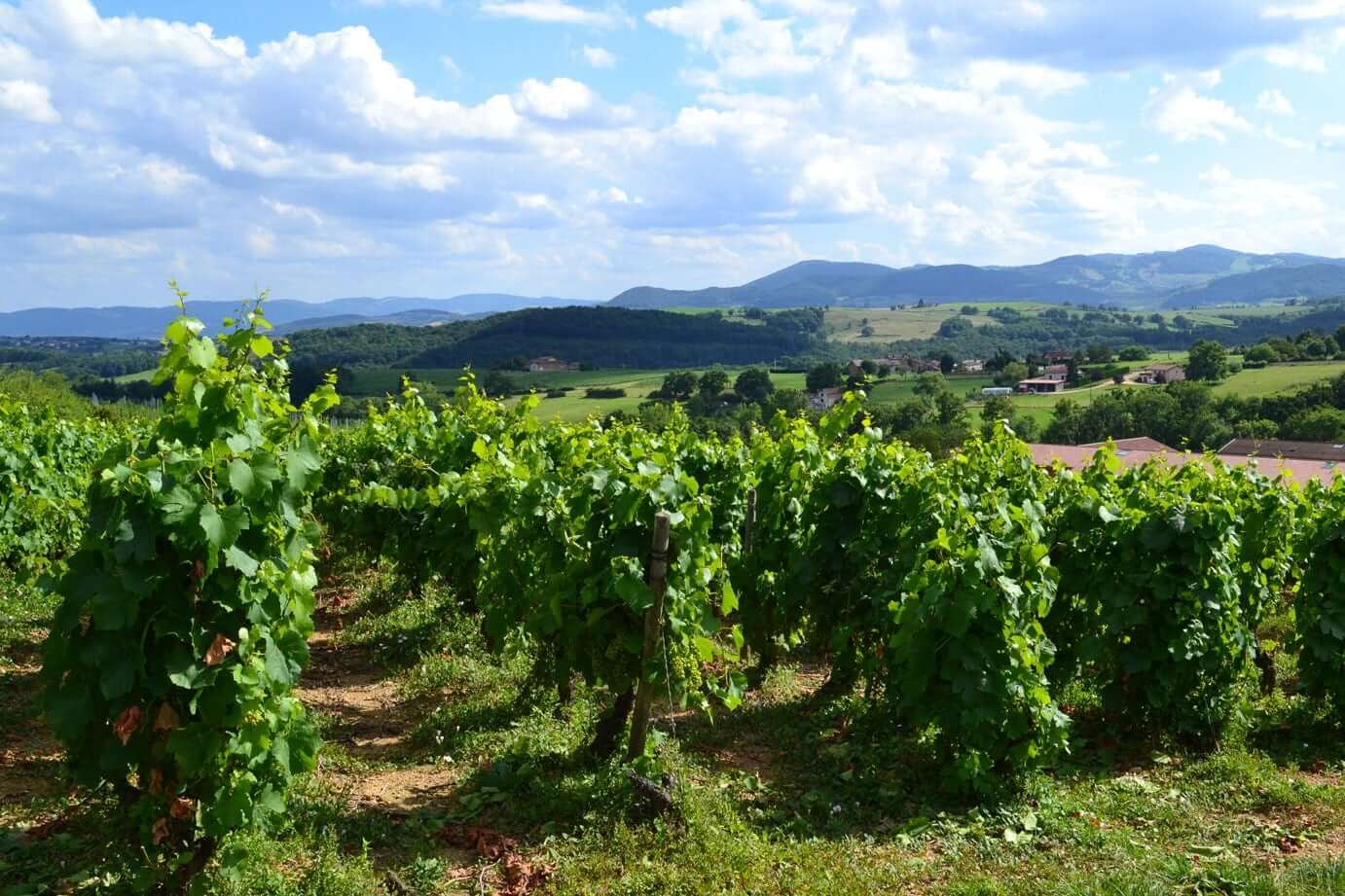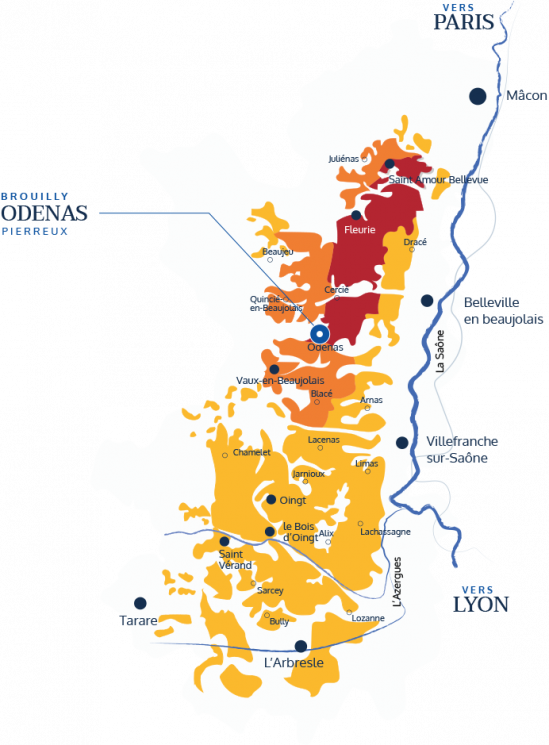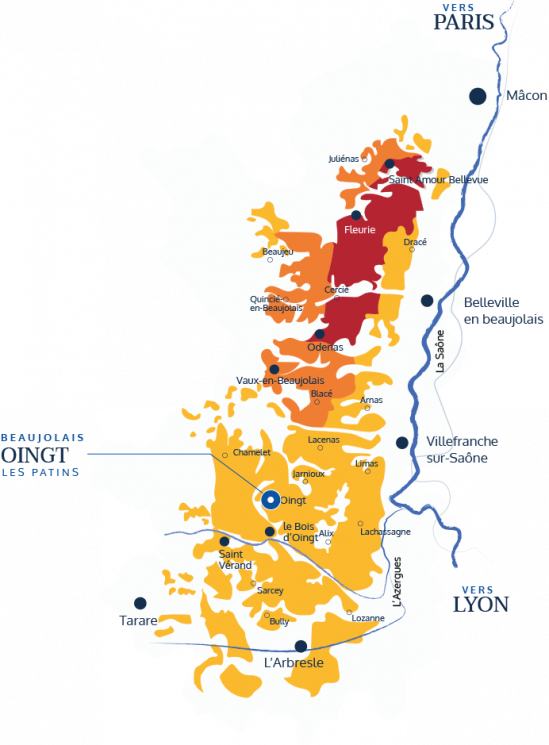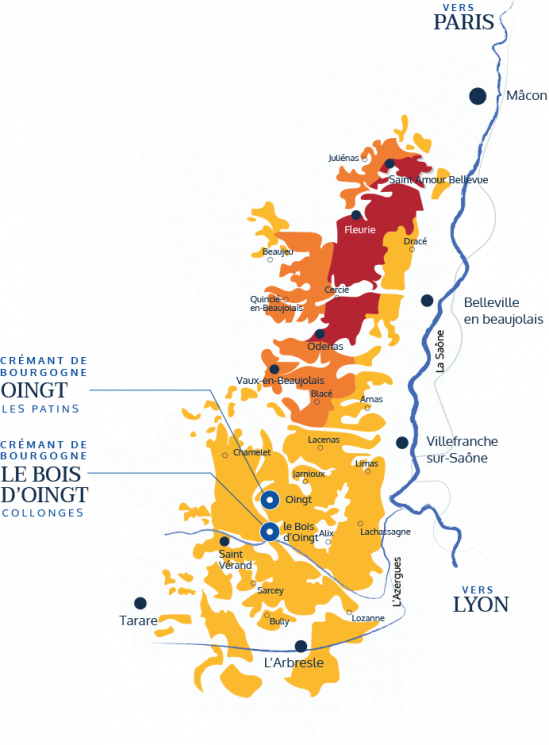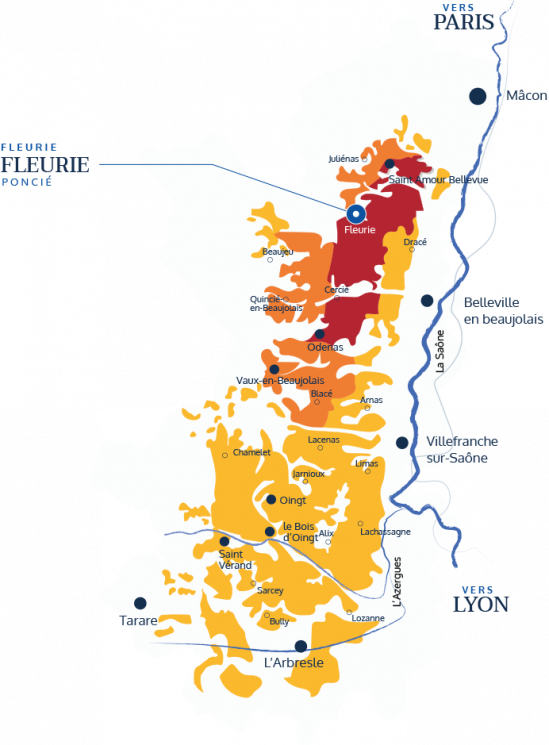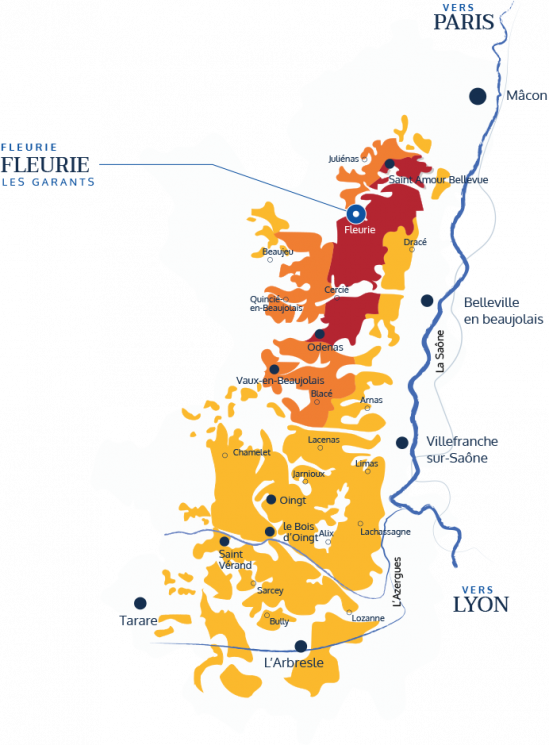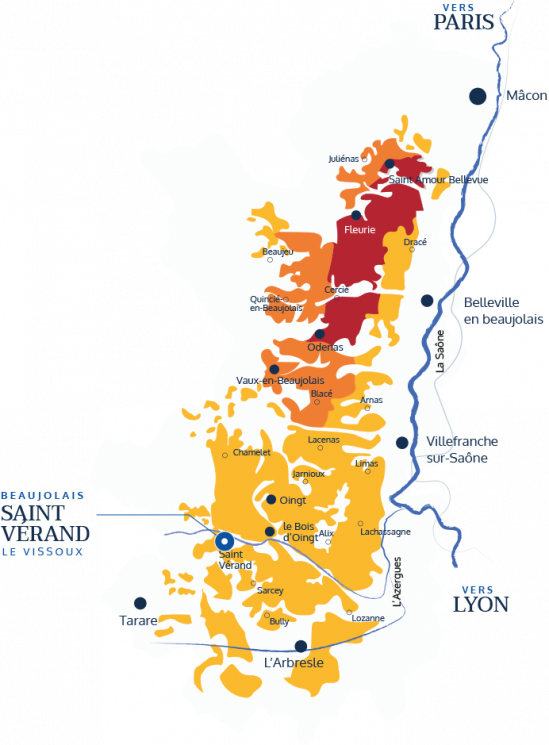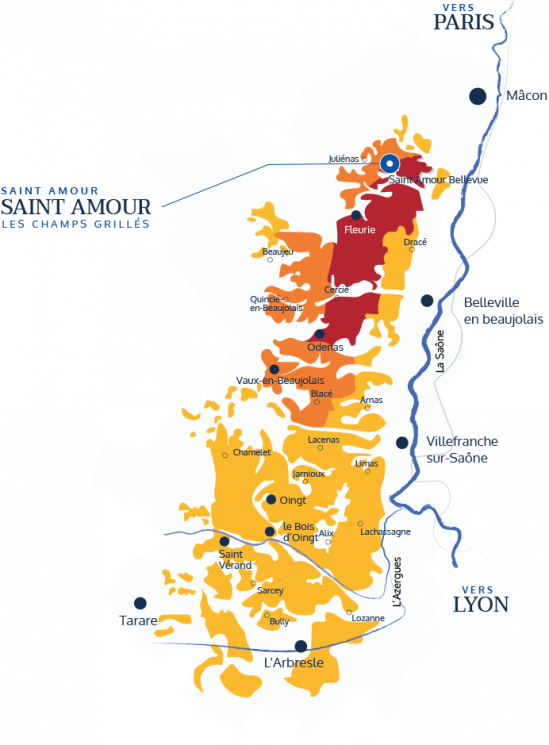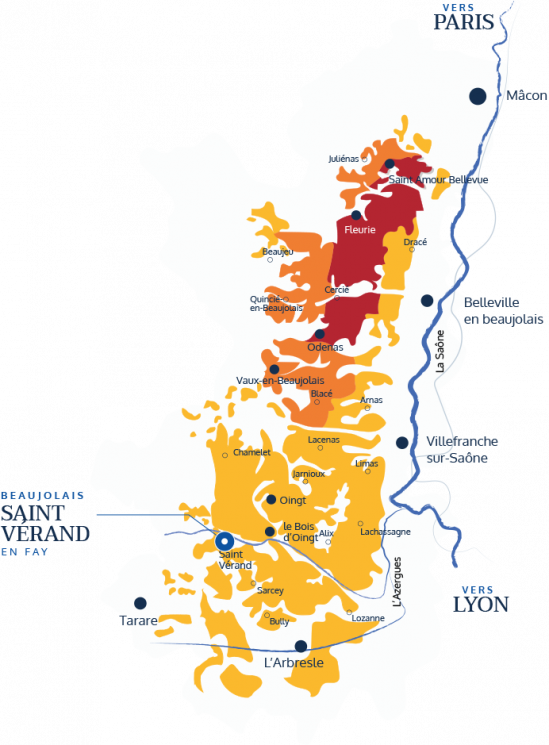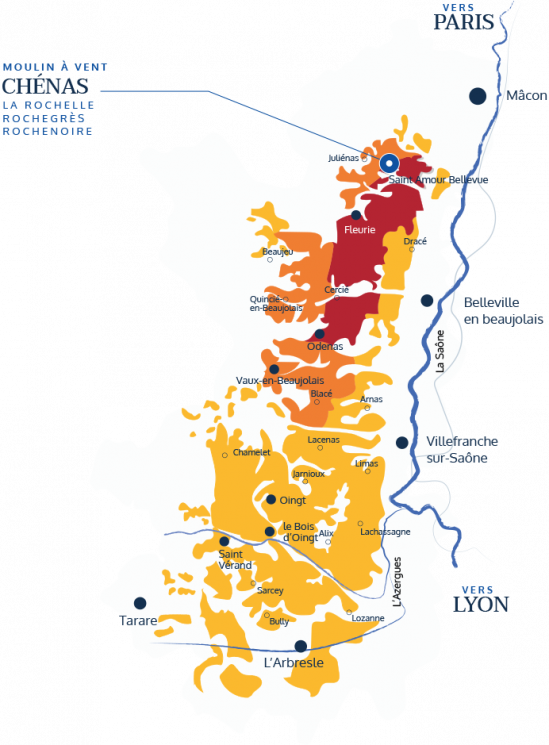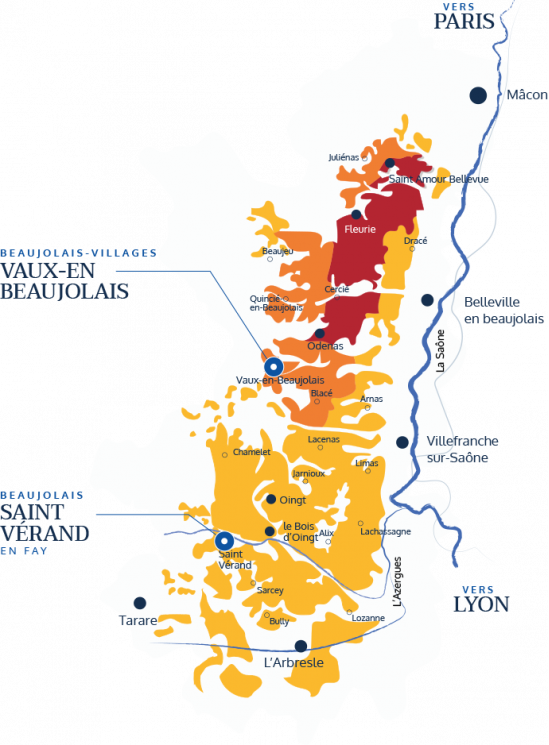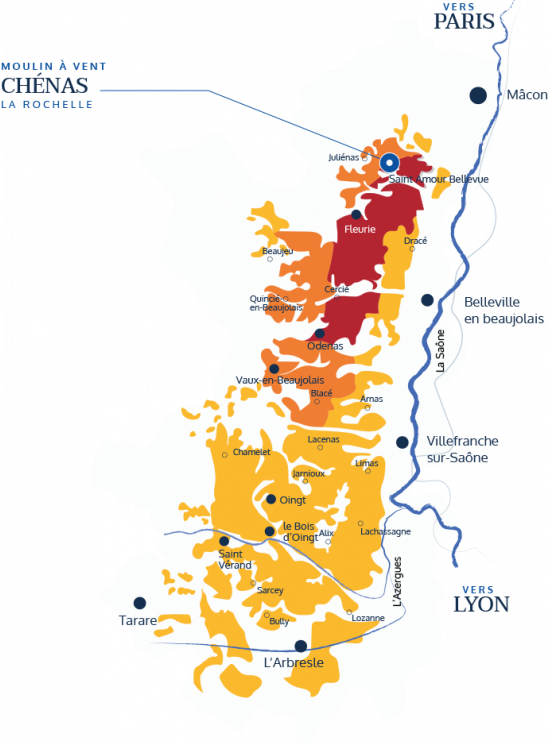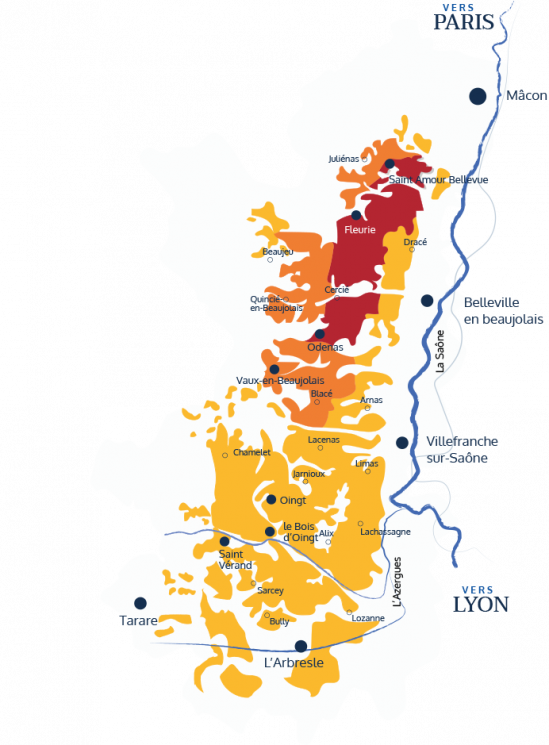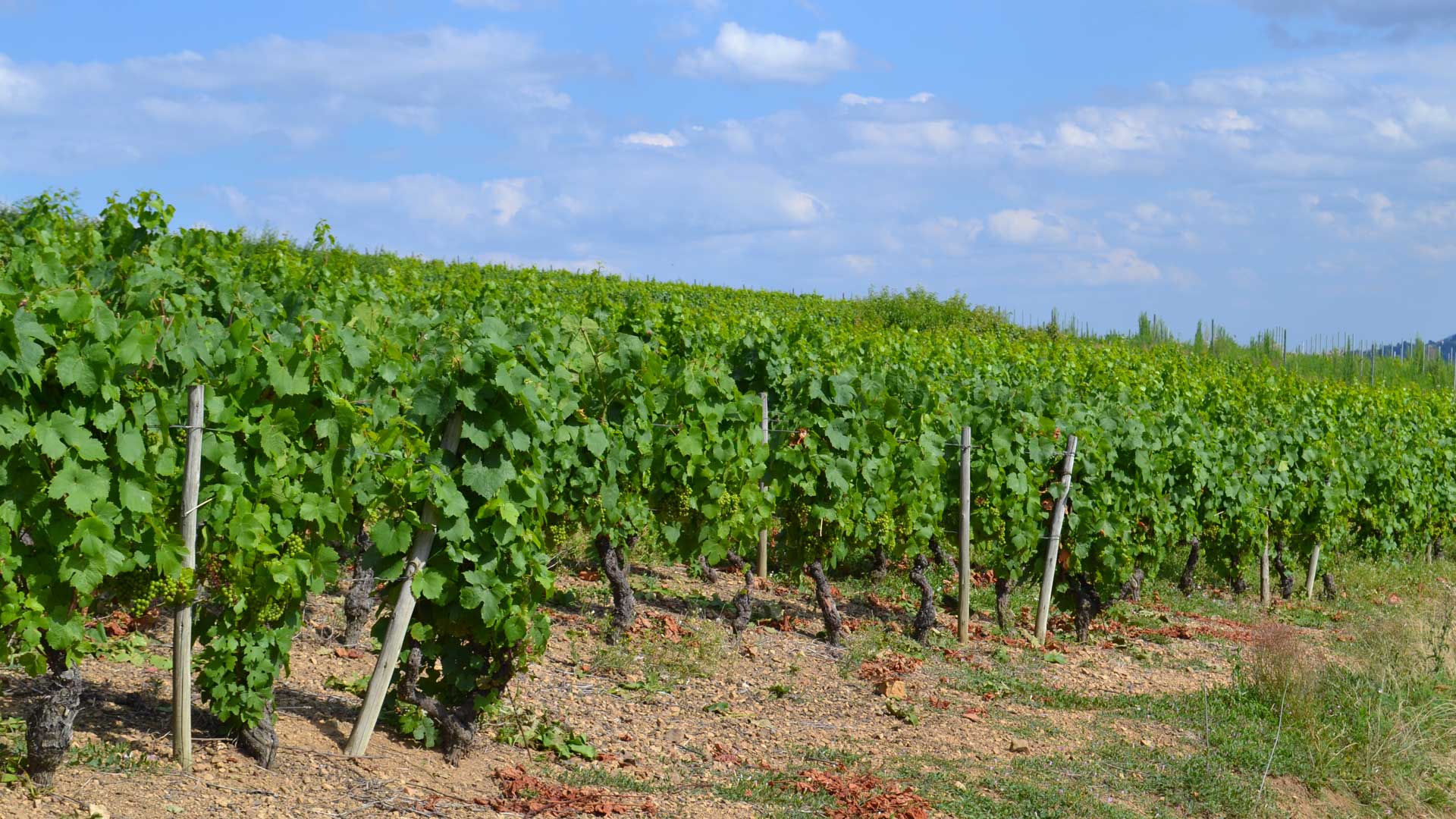Our plots Beaujolais and its Grand Terroirs
Les collines du Beaujolais se sont formées il y a 540 millions d’années. Elles étaient situées sous les tropiques où il y avait des volcans en éruption sous la mer ! De ces roches volcaniques sont nés les grands terroirs du Beaujolais avec une rare diversité géologique de plus de 300 types de sols. Les cépages Chardonnay et Gamay peuvent trouver une expression qui permet de réaliser des vins d’exception, en rouge, blanc, rosé et effervescent.
Le Beaujolais est classé Géoparc mondial par l’UNESCO.
Our plot The Beaujolais region
In the hamlet of Le Vissoux in Saint-Vérand, south of Beaujolais, has been the birthplace of the Vissoux family in the 17th century. It is the heart of the estate surrounded by a large 9 hectare plot with a beautiful southwest exposure.
Unlike the predominantly clay-limestone terrain of the southern Beaujolais region, the soil here is granite. It is the soil of predilection for the Gamay grape. This peculiarity helps to give more structure to the Beaujolais wines of the estate: Beaujolais les Griottes, Beaujolais Origine old vines.
As for the Cœur de Vendanges, it comes from more than a hundred-year-old vines located in Saint Verand as well as in Vaux en Beaujolai, in the hamlet called Clochemerle.
According to specialist Nicolas Besset, the soil at Saint-Vérand is rare and highly specific. It is made up of plagio-granites, which are also found in Norway and are similar to the blue stones of the Côte de Py in Morgon, but with more sand and pebbles. These plagio-granites are very rare on our planet and are found only in these 3 localities. These soils are very evenly distributed throughout the village of Saint-Vérand, as shown on the terroir map. In the photos of Beaujolais les Griottes, we can see the make-up of the soil: very little topsoil, around 40 cm, with a block of granite underneath. The tiny rootlets of the vines seep into every crack. It's a poor soil, forcing the vines to draw on the granite block for nourishment, giving the wine a distinctly terroir-like feel on the palate.
The winery regroup 30 hectars of Beaujolais vines. There are also 5 hectares of Chardonnay in Légny, Oingt and Le Bois d'Oingt on clay-limestone soil.
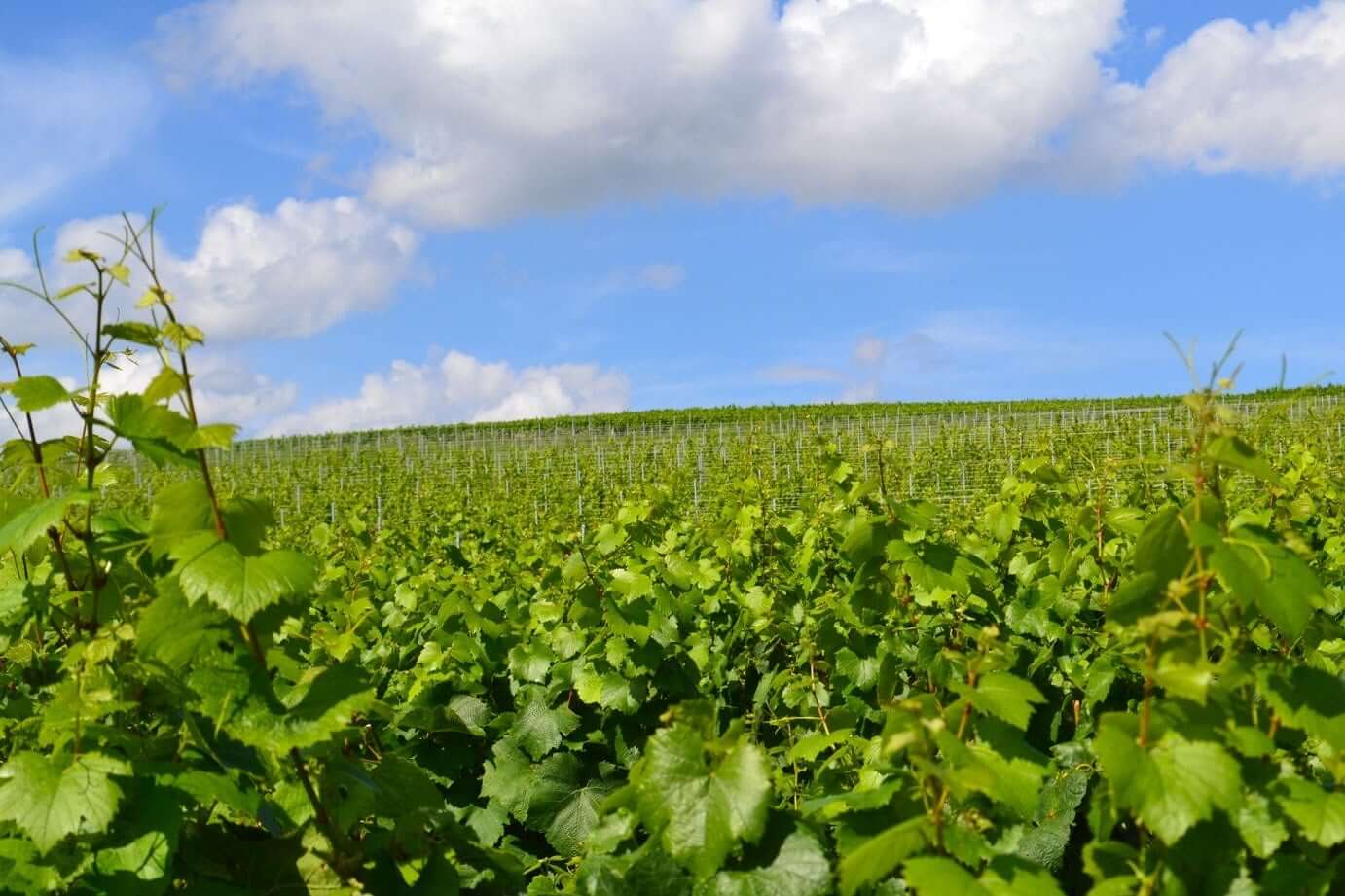
Our plot The Crus of Beaujolais
When we travel from south to north of Beaujolais, we arrive first at the Brouilly appellation, at the foot of the Mont Brouilly, located in the heart of the region. Heading north, we reach Fleurie, then the appellation Moulin-à-Vent. In the far north is situated the village of Saint-Amour.
All the soils are composed of various granites bringing different nuances to Gamay depending on the climate. The nobility and the great variety of terroirs give Gamay its most beautiful expressions which can flourish over time. The aromas of fresh fruit will gain in maturity and complexity from 3 to 5 years to last until 10 or 20 years, or even more… As the wines age, they become more like their Burgundian cousins, hence the saying "old Gamay on granite pinotent".
Our crus Brouilly, Fleurie, Moulin-à-Vent, Saint-Amour represent 20 hectares of vines.
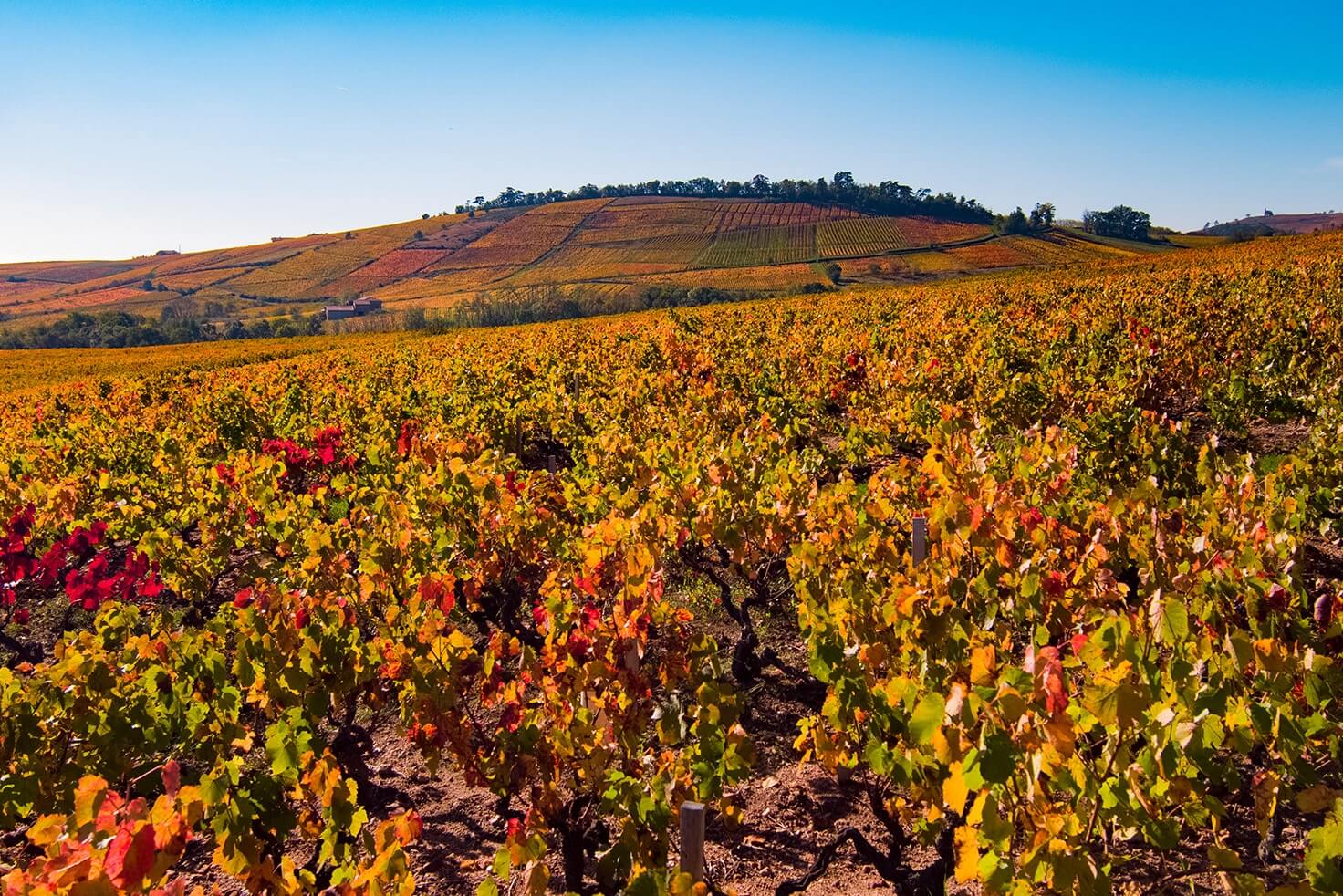
Our plot The bubbles and white Beaujolais
Our Crémants de Bourgogne are made from the Chardonnay grape variety. The vines are situated in the south of Beaujolais on a clay-limestone soil, the soil of predilection for Chardonnay. Much of the white Beaujolais also comes from these vines.
The plots are located in the Golden Stone villages in Oingt, Légny, le Bois d’Oingt and Saint Vérand on 5 hectares.
